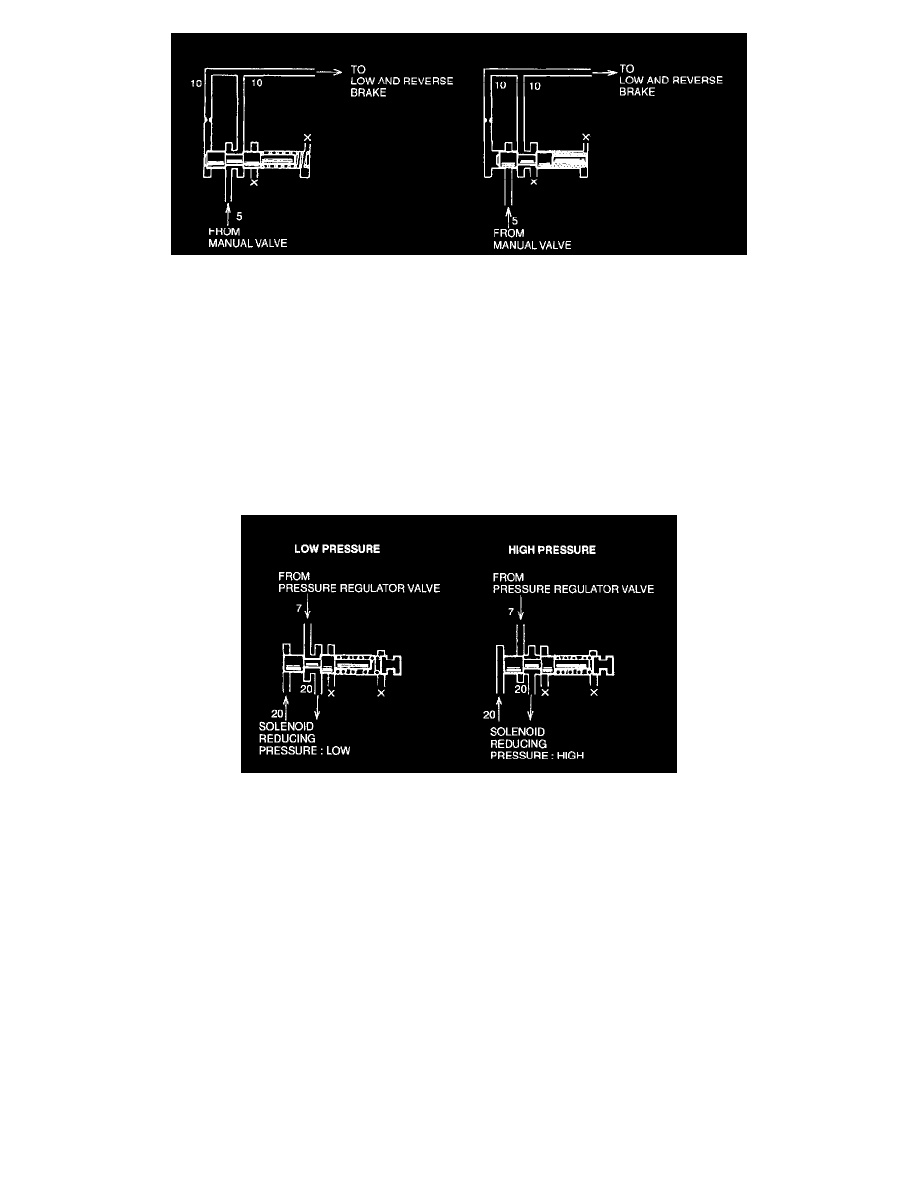MPV DX V6-2.5L DOHC (2000)

Operation
-
The valve is normally pushed to the left side by spring force. When 1 range is selected, line pressure (5) is transmitted to low reducing pressure
(10). Low reducing pressure (10) is then also applied to the left end of the valve, pushing it to the right side. As a result, line pressure (5) is
disconnected from (10) and the low reducing pressure is drained. Thus, the pressure is lowered.
-
If the low reducing pressure (10) decreases, the force that pushes the valve to the right side also decreases, allowing the valve to move to the left
side by spring force. This closes the drain path.
-
In this way the valve balances with spring force, and low reducing pressure (10) becomes lower than line pressure (5).
Solenoid Reducing Valve
SOLENOID REDUCING VALVE
Outline
-
The solenoid reducing valve converts line pressure to solenoid reducing pressure which acts on the pressure control solenoid valve. The solenoid
reducing pressure has a constant pressure of 360 - 400 kPa (3.6 - 4.1 kgf/cm2, 52 - 58 psi).
Operation
-
Solenoid reducing pressure (20) pushes on the solenoid reducing valve to the right, while spring force pushes to the left.
-
When solenoid reducing pressure (20) increases, the solenoid reducing valve moves to the right until pressure is drained. This maintains a constant
pressure to keep the spring force and line pressure (7) balanced. Solenoid reducing pressure becomes fixed.
Converter Relief Valve
CONVERTER RELIEF VALVE
Outline
-
The converter relief valve prevents torque converter pressure from exceeding a specified level.
